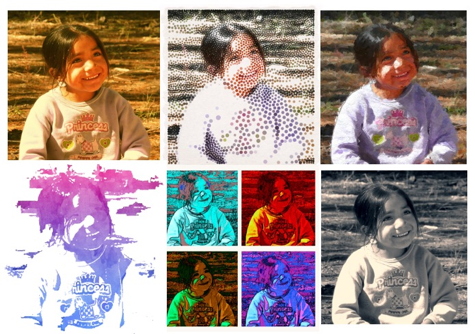
Opinion by Curt Blanchard
I’m increasingly uneasy about a growing trend in filtered photographs. No, I’m not a Luddite, I’m a digital designer with a BFA in Illustration who is now much more comfortable working on my Mac than at a drawing board.
There is a blurry line that separates using your eye, mind, and creative skills to make a good photograph from merely clicking a button to drop a filter over a cameraphone photo. A slope has started to slip making it possible for casual smartphone users to take a photo, any ol’ photo, and saturate it, age it, convert it to black and white, or otherwise distort it and then post it online feeling hip.
The eye behind the camera is always the differentiating factor between a great composition and a dull one. However, using an inexpensive smartphone app to “enhance” an ordinary photo is the equivalent to repainting an old car. The result may be glitzy, but it’s still an old car. These apps are creative toys, and are great fun to play with for a while, but the novelty can wear off pretty quickly.
When Matthew Brady exposed his glass plates to make the first photographs, the art world was amused but looked down their noses complaining that it wasn’t Art. It was merely a trick. Real Art had to be made by putting a brush to canvas or ink to paper. More recently, die-hards contended that real photography needed to use film in order to qualify as a Real Photograph.
So here’s the conundrum—where’s the dividing line and do we even need one? Ansel Adams had a superb eye and took stunning photographs, but he was also a darkroom wizard. He dodged and burned and manipulated his exposures as he made his prints to produce images that are impossible to recreate today by simply printing from the negatives he left us. His prints were unique, creative works of art.
Compare these works to jazzed-up Instagram photos. Somewhere between these two extremes is a point that separates the work of a trained professional from the casual social media poster.

There are more than a hundred smartphone camera apps, shareware utilities, and design applications available for an aspiring, creative person to try. Some are fun, some are serious, and some are nothing but one-click ponies that overlay filters. What differentiates the work produced by a novice from that of a trained pro? I suppose it’s the results; I’ve seen some wonderful images produced by rank amateurs. Still, I’m alarmed by the proliferation of really awful transformed photos I’m seeing in increasing numbers recently. They contribute to a rising volume of irritating static obscuring truly great photographic efforts.

Whenever I see one of these filtered photos, I appreciate the idea and its one-click easiness. Some of the results are lovely, but I wish there were a little more to it than a simple—Ta-Dah! Using an app’s filter to post-process a photo with a single click isn’t very creative, and if anyone deserves the credit, it’s the app developer, not the person who simply clicks a button to transform their photo.

Leave a Reply
You must be logged in to post a comment.